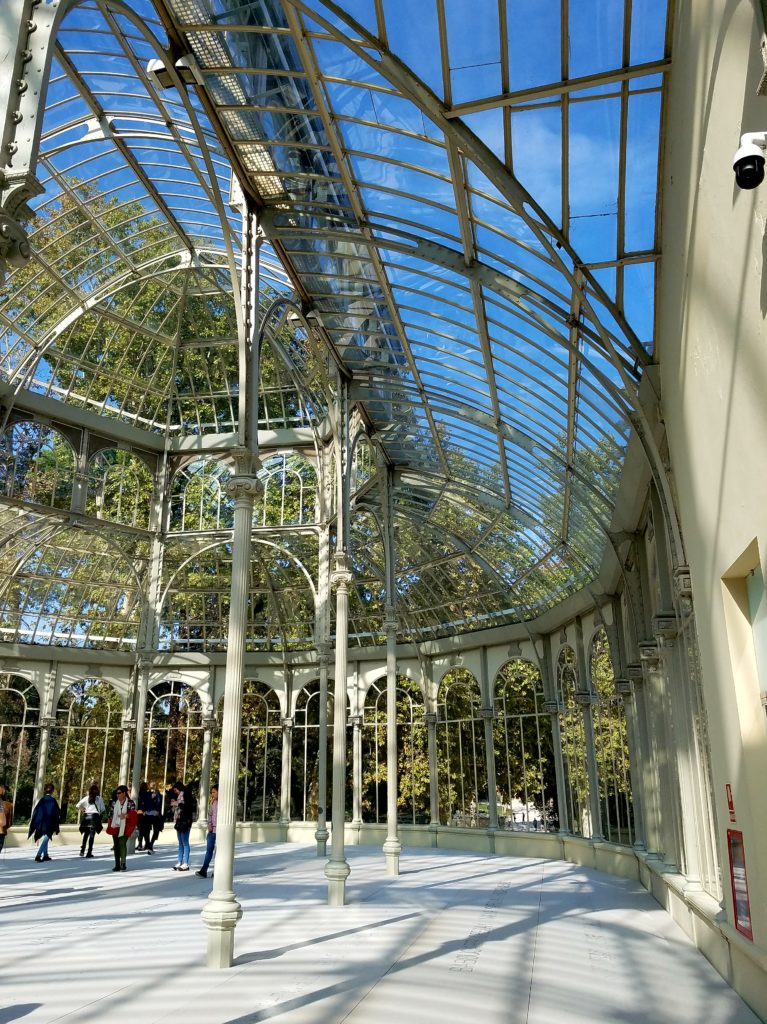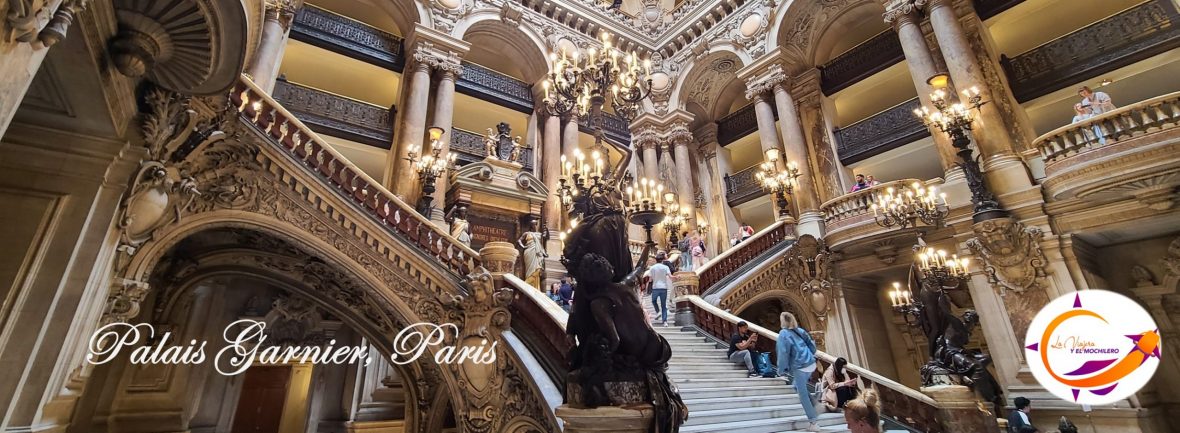The Crystal Palace found in the “Buen Retiro” Park is without a doubt, one of the most beautiful structures that can be found in Madrid. A structure that on one hand, combines subtle and romance, and on the other hand, an integration of innovative materials and monumental space providing an impressive attitude.
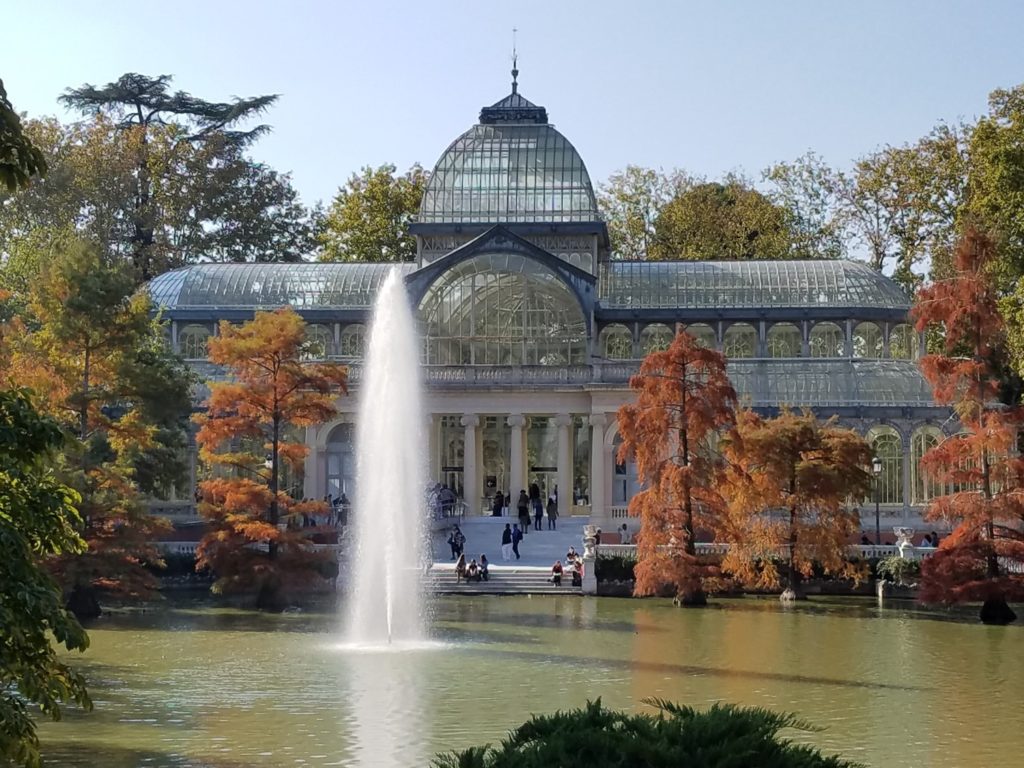
Much like in the case of the Expo Palace or Velazquez Palace and for the same motive, it accomodates important exhibitions. The Architect Ricardo Velázquez Bosco built the Crystal Palace in 1887. It took five months to build and was designed as a greenhouse for exotic plants brought for the Floral Expo of the Philippine Islands, which at the time was a Spanish Colony. This was project was inspired on Paxton’s Crystal Palace found in London.
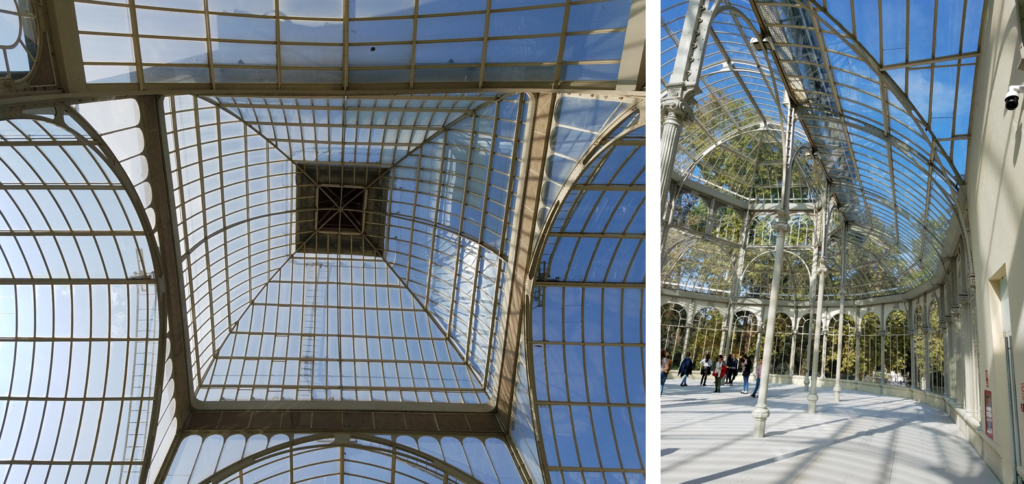
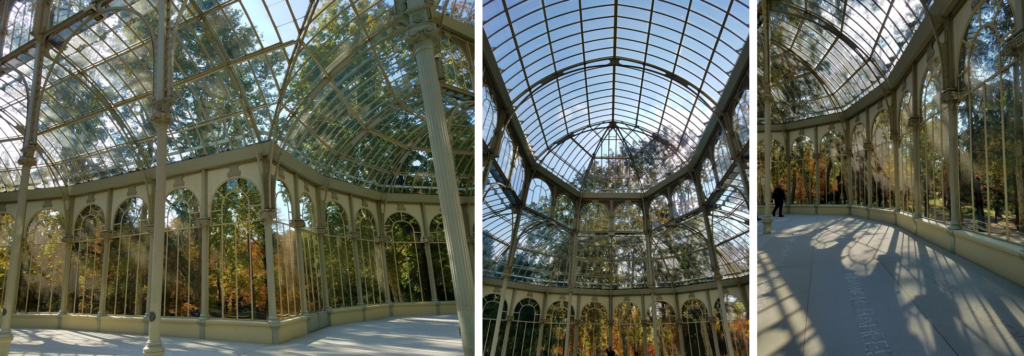
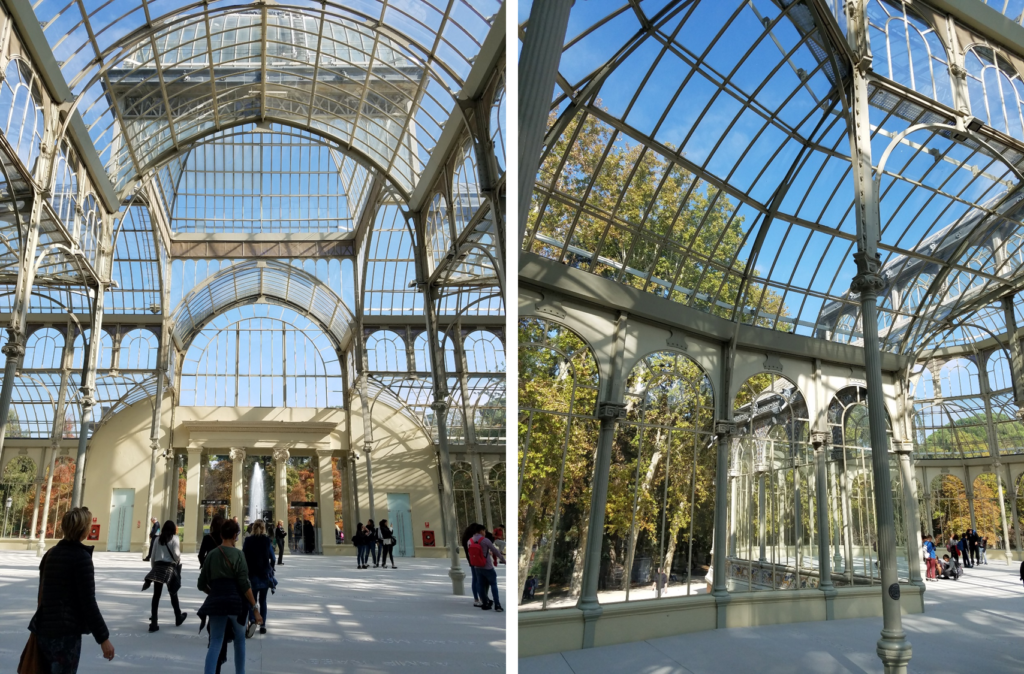
The Crustal Palace is one of the best examples of what is known as “Iron Architecture” in Madrid, given that it was the first time in Spain that iron and glass were used in a non-industrial purpose building. It was precisely the Industrial Revolution which promoted big changes in the use of construction materials, tempered to functional needs of a new society; industrious and capitalist. The use of materials such as steel, iron, laminated steel, reinforced concrete and glass, gained prominence during the late XIX century. Events such as the Universal Expo’s helped to popularize these materials and new construction techniques.
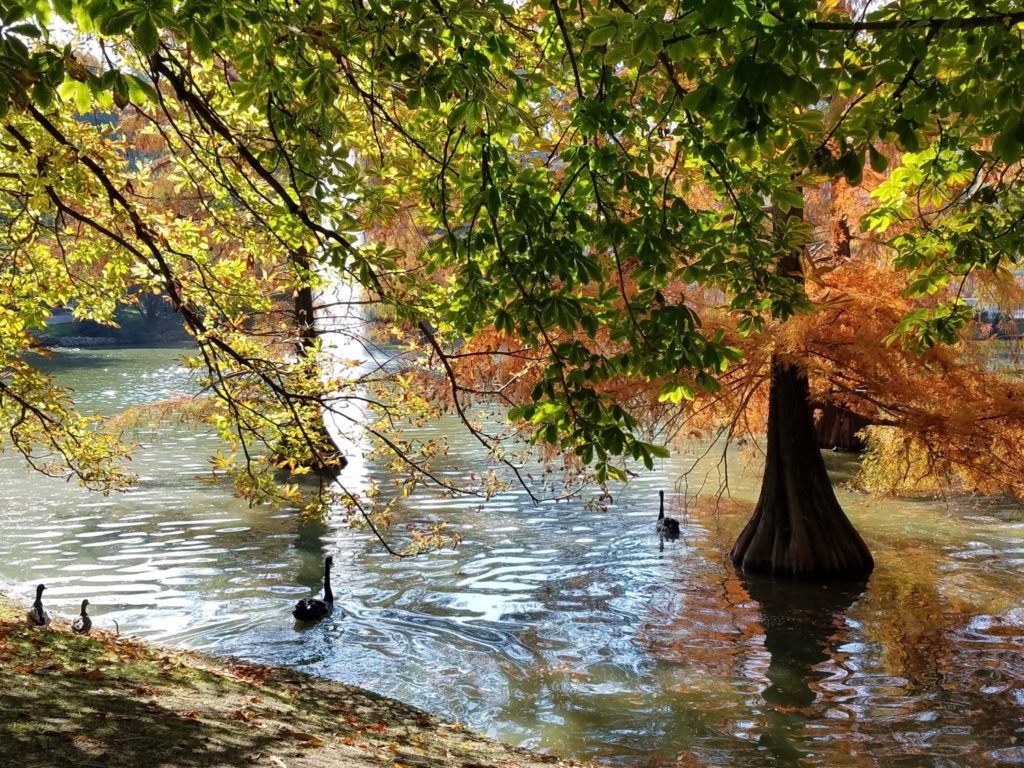
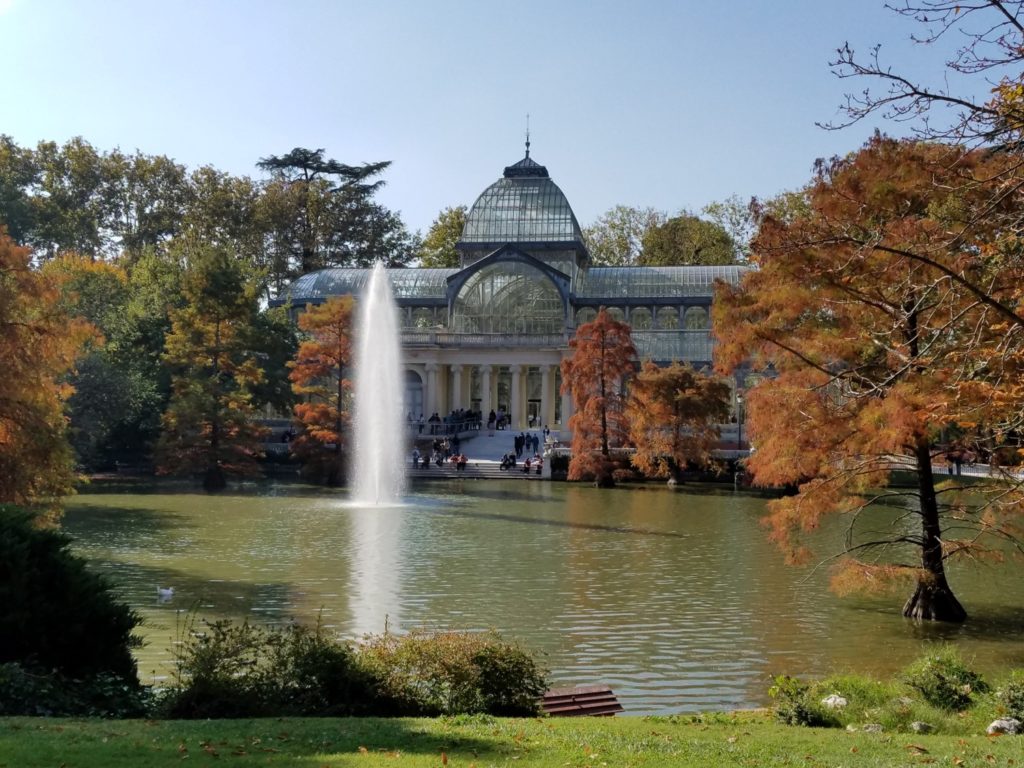
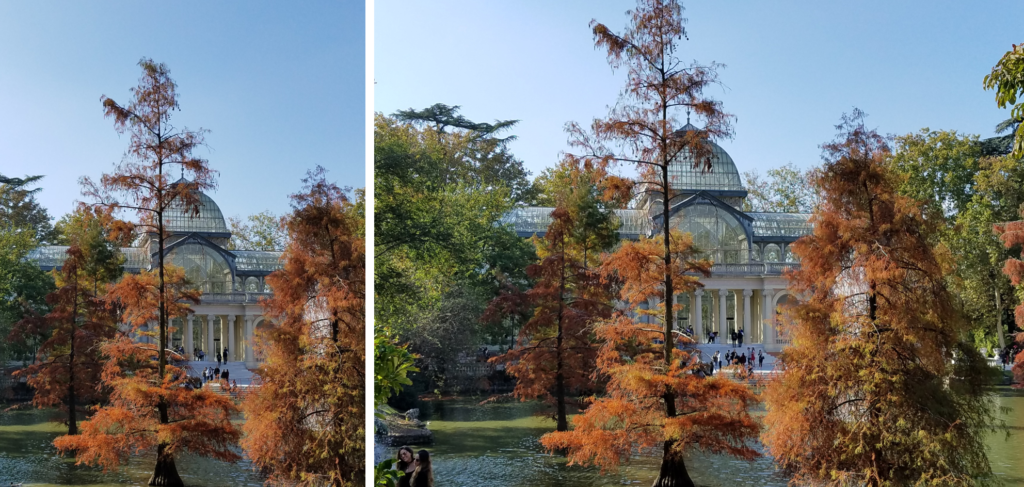
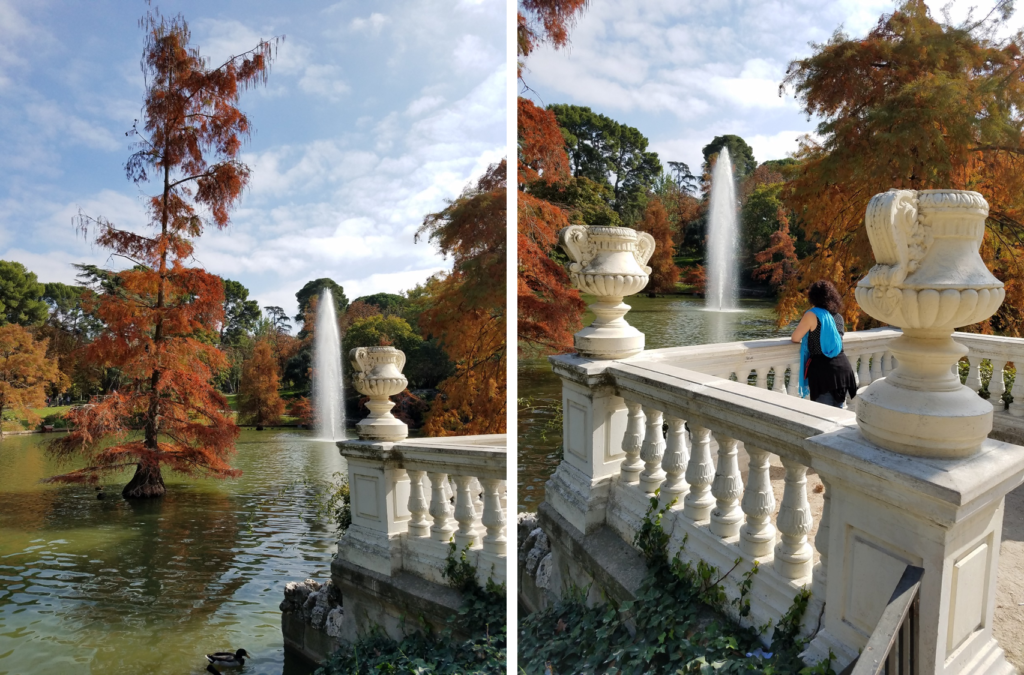
Velázquez was inspired by the sanctuary of a Gothic church to design and build the structure’s main plant in the form of a Greek Cross. It was divided into three lateral naves and a central nave, surrounded by walls and ceilings in glass. Crowned with a mirrored glass dome at a height of 22.60 meters and which stands out above the other semi-circular domes.
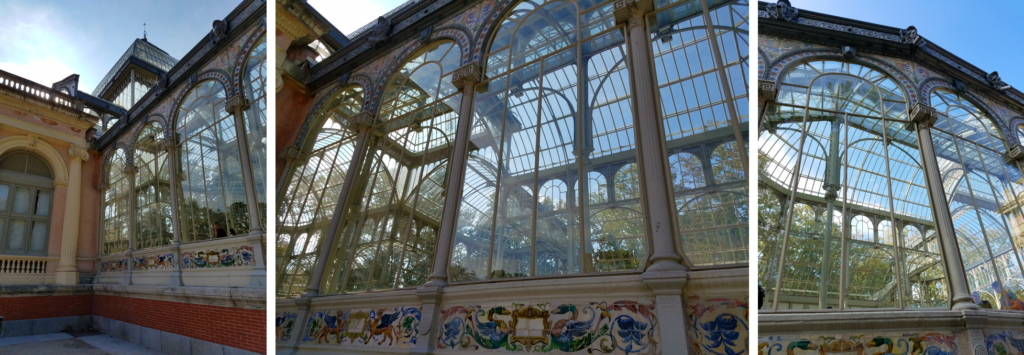
Iron was used in the Ionic columns which sustain the overhead crystal structure in a foundation platform of brick and stone. In addition to forged iron, cast iron was used for certain parts, such as the cherubs which adorn the upper cornice. The columns of the portal are of stone over a concrete base and the stairs are of granite. The potter Daniel Zuloaga, is responsible for the tiles that adorn the perimeter with dragons, stars and flowers. The classic Greek gateway leads to a terrace with a view to the lake.
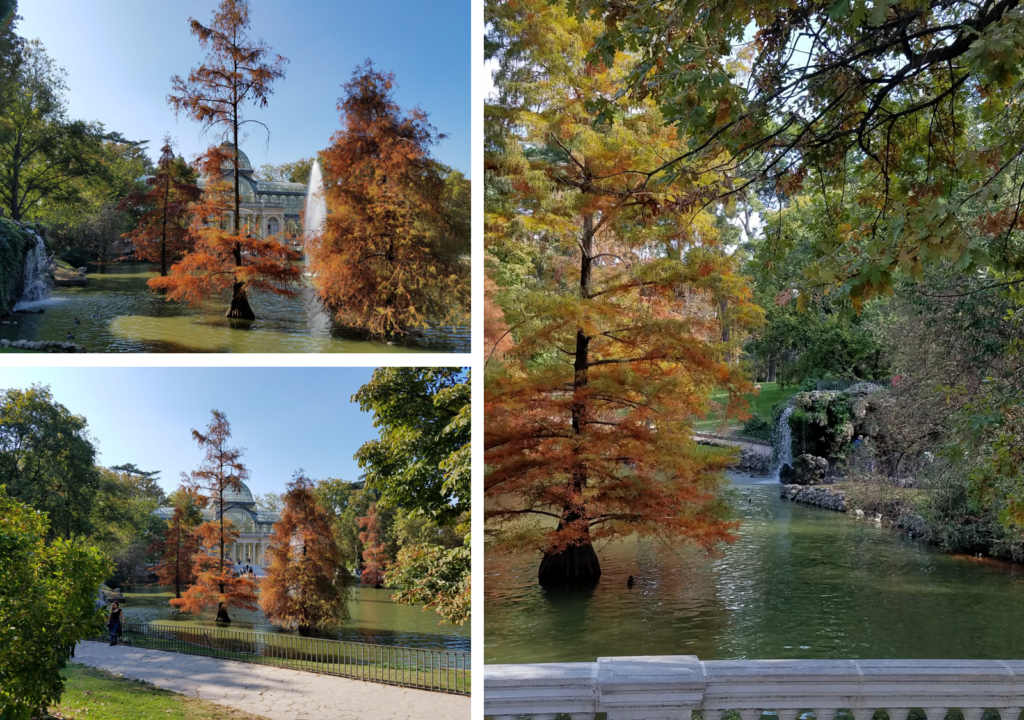
Presently, this space is used for seasonal exhibits by the Queen Sofia’s National Center for Art Museum.
